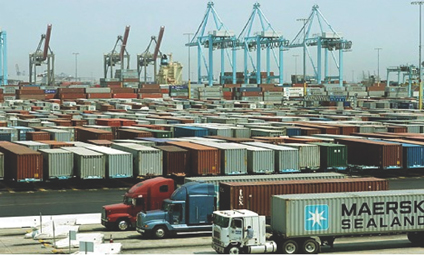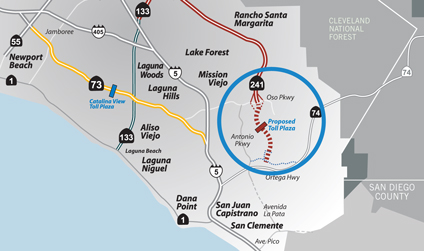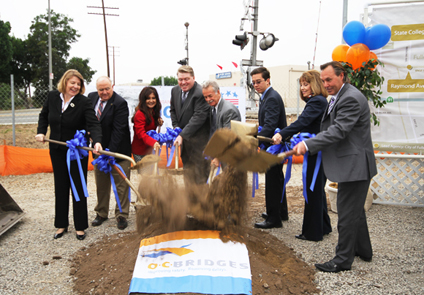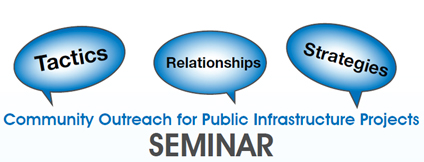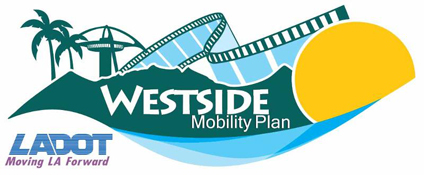Caltrans on Balancing Challenges and Opportunities:
Interview with Malcolm Dougherty
 This month we’re turning our attention to the California Department of Transportation, better known as Caltrans, for a behind-the-scenes look at what’s going on at the state level of transportation. In the 2010-11 fiscal year, Caltrans planned to deliver 346 projects worth $3.9 billion. Statewide, Caltrans manages more than 50,000 miles of California’s highway and freeway lanes, provides inter-city rail services, permits more than 400 public-use airports and special-use hospital heliports and works with local agencies.
This month we’re turning our attention to the California Department of Transportation, better known as Caltrans, for a behind-the-scenes look at what’s going on at the state level of transportation. In the 2010-11 fiscal year, Caltrans planned to deliver 346 projects worth $3.9 billion. Statewide, Caltrans manages more than 50,000 miles of California’s highway and freeway lanes, provides inter-city rail services, permits more than 400 public-use airports and special-use hospital heliports and works with local agencies.
In our interview, Caltrans Acting Director Malcolm Dougherty discusses the recent Statewide Needs Assessment Report and other pressing transportation issues for California.
In case you missed last month’s interview with Senator Barbara Boxer, read her insights on the next federal transportation bill on our website.
M 21: What’s the magnitude of the statewide needs assessment that will soon be presented to the California Transportation Commission?
MD: Caltrans needs a stable source of funding for all transportation infrastructure. The total cost of all system preservation, management, and expansion projects during the ten-year study period, as presented in the draft report to the CTC, is nearly $536.2 billion. The total estimated revenue from all sources during the ten-year study period is estimated to
be $242.4 billion. This represents about 45 percent of the overall estimated costs of projects and programs that were identified in the needs analysis, and leads to a shortfall of about $293.8 billion over the ten-year period. Investments to preserve transportation systems have not kept pace with the demands on them. A stable source of funding, especially from the federal government, is needed to ensure we keep pace with growing infrastructure needs.
M 21: How do the state’s ongoing fiscal challenges impact Caltrans and what do these budget issues mean to motorists?
MD: The economic downturn has led to decreased fuel consumption, which has lowered transportation revenues. Over the years, travel on the state highway system has increased, while the “value for money” has decreased as inflation has caused higher project costs. On the other hand, the economic downturn has made the construction market highly competitive, resulting in significant construction savings over the last three years, which has served to counterbalance some of the loss of buying power experienced over the last decade.
In the absence of new revenue sources, maintaining the transportation system will continue to be a challenge. The increase in vehicle miles traveled, coupled with the age of the system, is causing a faster rate of pavement and bridge deterioration along with increased hours of traffic congestion.
Despite these challenges Caltrans strives to maintain the state highway system with the highest priority given to those projects that ensure the safety of the traveling public. The Department has leveraged federal funding in an effort to stretch our transportation dollars further and provide a world-class transportation system.
M 21: How many highway projects are currently underway in California and where does the funding for those projects come from? What are some major projects Southern Californians would be familiar with?
MD: As of November 1, 2011, Caltrans has 715 projects valued at almost $10.3 billion in construction throughout the state.
The major funding sources for transportation include state, local, and federal funds as well as state bond funds. Locally controlled resources represent more than half of the total transportation resources in the state. The passage of the Proposition 1B transportation bond by voters in 2006 invested a total of $19.9 billion in funding for current and future road, bridge, and transit projects.
Transportation projects are providing jobs and improving mobility for people and businesses in California.
Some of the projects that most Southern Californians are familiar with:
Interstate 405 Carpool Lane Project
- $1.34 billion project to build a carpool lane on the San Diego Freeway (I-405) from U.S. 101 to Interstate 10 in West Los Angeles.
- Once complete in 2013, there will be 72 miles of continuous carpool lanes from the San Fernando Valley to the Orange County line – the longest carpool lane in the world.
Interstate 710 Long Life Pavement Project
- Caltrans is rehabilitating the Long Beach freeway (I-710) from Firestone Boulevard to Atlantic Boulevard, which will extend the service life of the pavement by several decades while providing a smoother ride for the traveling public.
- The $65 million project is scheduled for completion by spring 2012.
Interstate 5 Carpool Lane Project
- Caltrans is constructing a carpool lane in each direction on Interstate 5 between the Hollywood Freeway (SR-170) and SR-118, a distance of 6.8 miles.
- The project includes a direct carpool lane connector that allows for freeway-to-freeway transfers without exiting the carpool lane.
- The $140 million project will alleviate congestion, encourage carpooling, improve air quality, and provide a smoother ride for motorists.
- Work began in August 2010 and is on track for completion in late 2013.
M 21: A recent article in the LA Times noted that California is paying interest on $9.1 billion in infrastructure bonds that have been sold, but not yet allocated to projects. What will happen to this money if it is not spent in a timely manner? Will there be a need for additional bond sales on previously approved bonds?
MD: In mid-October, 2011, the State Treasurer’s Office was successful in selling bonds, a portion of which has been allocated to transportation. The new funds, when combined with existing cash balances, will be used to keep projects already in construction moving forward and will also allow Caltrans to recommend additional projects to the California Transportation Commission (CTC) for allocation.
The funds will be spent in a timely manner. Just last month, the CTC allocated $695 million in Proposition 1B funds to 41 projects. Caltrans expects that with the current bond sale schedule, funds will be allocated to projects through June 2012, drawing down the balance. Future bond sales will continue to fund existing projects while moving ready to list projects into construction.
M 21: There has been a lot of focus lately on public-private partnerships and alternative project delivery methods. What are your thoughts on the design-build project delivery method as well as having private firms perform more of the project design work to help deliver projects and spur job creation?
MD: Caltrans is invested in innovative project delivery methods that could accelerate projects, potentially save taxpayers money, and introduce new funding or financing options for transportation projects. Alternative delivery methods such as design-build and public-private partnerships (P3) are valuable tools that can be utilized for the right projects. The vast majority of our projects will still be delivered through our traditional processes, but there will also be some projects that will greatly benefit from the use of alternative delivery methods.
In 2009, the Legislature authorized an unlimited number of P3 partnerships. In January 2011, Caltrans signed the Presidio Parkway agreement, the first P3 approved under that legislation. The project will replace the existing southern access to the Golden Gate Bridge with a seismically safe structure.
In addition, Caltrans was also recently granted the authority to use design-build as a method of contracting on 10 projects as a pilot program. This allows us to award a single contract for both a project’s design and construction, saving time and money. Caltrans recently began construction on the $33 million Madera 99 Freeway Rehabilitation Project in Madera County, the first Caltrans project to use design-build. It is estimated that the project will be completed one year sooner by using the design-build method. Other projects, such as the I-405 Carpool Lane, were done by design-build under separate authority in partnership with the Los Angeles County Metropolitan Transportation Authority.
M 21: Since Governor Brown took office, what is your sense of his priorities and vision for transportation in California?
MD: The strategic mission at Caltrans is still to deliver quality transportation projects that create jobs, protect California’s resources and assets, and keep people safe.
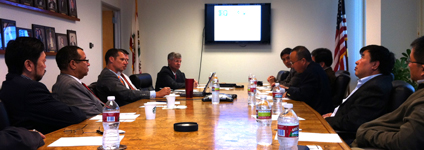
Mobility 21 Co-Hosts Delegation from Shanghai
A delegation from Shanghai, China sat down with members of the Southern California Contractors Association (SCCA) and Mobility 21 to learn about the infrastructure market in our region and future business opportunities. The delegation of six professionals from the Shanghai Urban Construction Design & Research Institute and the Shanghai Construction Group listened to presentations given by Mobility 21‘s Vice Chair Gary Toebben, President and CEO of the Los Angeles Area Chamber of Commerce, Larry Russell, Executive Vice President of SCCA and Jerry Givens, Los Angeles Area Manager of Parsons Brinckerhoff.
The Shanghai delegation asked questions about the design, environmental review and construction process, as well as public-private partnerships. A common theme throughout the presentations was the scarcity of funding for transportation, particularly at the federal level. “There is simply not enough money if you wait for the federal government to fund highway and transit projects,” explained Toebben. “States and local communities have decided to tax themselves to help pay for transportation.”
According to the Southern California Association of Governments’ draft Regional Transportation Plan, the transportation funding breakdown looks like this: 11 percent comes from the federal government, 15 percent is state-funded and an astounding 74 percent of the money for Southern California’s transportation projects is raised locally through sales tax measures.
Building Safer, More Walkable Communities
There are some pretty staggering statistics showing the importance of an active community. For the first time in history, children have a lower life expectancy than their parents. According to the 2009 National Household Travel Survey, 21 percent of all trips made in the Southern California Association of Governments region are done via walking and/or biking. Creating safer, more walkable communities are an essential part of a comprehensive transportation system.
“Mobility 21 supports a multi-modal approach to transportation that includes investment in first and last mile transportation solutions,” said Marnie O’Brien Primmer, Mobility 21 Executive Director. “Creating a transportation network that gives residents safe access to active transportation as well as more transit choices and world-class highways is at the heart of what Mobility 21 is working on for all Southern Californians.”
Last month, Mobility 21 joined the San Diego chapter of Women’s Transportation Seminar and the Institute of Transportation Engineers at an educational seminar on active transportation, complete streets and safe routes to school. Speakers from Caltrans, the California Department of Public Health, WalkSanDiego and the San Diego Association of Governments discussed implementation of safe routes to school programs.
While goods movement plays an important role in our economy, it also is a major contributor to air pollution. The South Coast Air Quality Management District regulates air quality in Orange, Los Angeles, Riverside and San Bernardino counties.
AQMD Calls Southern California to Action:
Transportation’s Role in a Greener Tomorrow
The South Coast Air Quality Management District (SCAQMD) held its regional conference last month to inspire transportation professionals and other stakeholders to plan a greener, cleaner transportation system of the future.
During the conference, SCAQMD Executive Director Barry Wallerstein discussed the need for cleaner technologies to combat public health and air quality issues. Emissions from cars, trucks, trains, ships and aircrafts contribute to 90 percent of regional air pollution. Much of this comes from goods movement.
“Infrastructure and public policy should be focused on building transportation systems that help goods get to market more efficiently, meet our growing population needs, offer mobility options that work in concert and address our environmental and public health concerns,” said Fran Inman, Sr. Vice President of Majestic Realty. “We can’t build an effective system if we don’t all work together.”
California State Senator Alan Lowenthal highlighted that Southern California shoulders the negative impact of goods movement while providing a service to the rest of the nation, yet there is no federal program to regulate or invest in it. Lowenthal pointed out that any future national surface transportation bill should feature goods movement as the centerpiece.
Other notable conference speakers included:
- Hon. Laura Richardson, Representative, U.S. House of Representatives
- Hon. Antonio Villaraigosa, Mayor, City of Los Angeles
- Ed Begley Jr., Actor and Environmentalist
- Dr. William Burke, Chairman, SCAQMD
- Hasan Ikhrata, Executive Director, Southern California Association of Governments and Board Member, Mobility 21
- Fran Inman, Sr. Vice President, Majestic Realty
- Mary Nichols, Chairman, California Air Resources Board
- Kathryn Phillips, Director, Sierra Club California
The Transportation Corridor Agency Board of Directors recently took a step toward starting construction on an initial phase of the 241 completion project. Mobility 21 agrees that there is a growing traffic problem between San Diego and Orange counties that needs to be addressed or it could grow to gridlock properties and damage the economies of the area.
241 Toll Road Four Miles Closer to Completion
Last month, the Transportation Corridor Agencies Board of Directors voted to move forward with the first of three segments to connect the 241 Toll Road with the I-5. The agency will develop an engineering plan, complete environmental assessments and develop a financial strategy to build a four-mile segment from the current terminus at Oso Parkway to the vicinity of Ortega Highway.
The connection between the 241 Toll Road and the I-5 has been part of the comprehensive county, state and federal transportation planning effort for 30 years. When completed, the SR-241 will provide a critical alternative to the already congested I-5 and accommodate future growth in the area — all paid for without tax dollars. The $3.9 million analysis of the first four-mile segment is expected to take 12 months.
O.C. Bridges Project Begins in Placentia and Fullerton,
Destined to Enhance Safety and Reduce Traffic Delays
Excerpt from OCTA’s Weekly Update
Orange County Transportation Authority (OCTA) and Placentia city officials hosted a kickoff event for the O.C. Bridges program last month in Placentia, marking the start of two major construction projects that will mitigate traffic problems and safety issues along railroad crossings.
OCTA CEO and Mobility 21 Chair Will Kempton along with OCTA Chair Patricia Bates and Board Directors Bill Campbell, Lorri Galloway and Carolyn Cavecche participated in the groundbreaking. Placentia city officials at the event included Mayor Scott Nelson and Councilmember Jeremy Yamaguchi as well as City Administrator Troy L. Butzlaff.
“We must continue to remain competitive as a region, and improving goods movement infrastructure is a vital part of doing so,” Campbell said. “Separating street and rail traffic saves commuters time, money and improves air quality.”
The nearly $600-million grade separation program will separate street traffic from train tracks at seven railroad crossings, eliminating the need for drivers and pedestrians to waste time waiting at rail crossings for trains to pass.
Placentia Avenue, which borders the cities of Fullerton and Placentia, and Kraemer Boulevard, in the cities of Placentia and Anaheim, are the first of the seven projects to begin construction. The additional crossings will begin construction on a staggered basis over the next two years and include Orangethorpe Avenue, Tustin Avenue / Rose Drive, Lakeview Avenue, Raymond Avenue and State College Boulevard.
“Close to 70 Burlington Northern Santa Fe trains use this rail line through Anaheim, Fullerton and Placentia every day, causing delays, restricting emergency response and creating pollution and noise,” Bates said. “These bridges will eliminate the need for commuters and commercial vehicles to stop, wait and waste time at railroad crossings as seemingly endless freight trains pass. These delays are not only frustrating, they also are bad for the economy and our environment.”
Transportation officials anticipate the number of trains along the BNSF rail line will increase more than 45 percent or trains running every 10 minutes by 2030.
Community Outreach for Public Infrastructure Projects Seminar
In this day and age, community outreach is an essential component of a successful infrastructure project. Those tasked with delivering a highway, road, rail or city development project on time and on budget often struggle with developing effective and low-cost methods of communicating with the local community and others heavily impacted by construction.
Speakers will share best-practices and tactics you can immediately implement at your agency that will enhance your relationship with the community during construction and ultimately add value to your project. Additionally, this event will provide an invaluable opportunity for you to network with other communication and public infrastructure professionals.
A driving tour of the West County Connectors Project will be available at the end of the seminar for the first 16 attendees who RSVP.
Date: Tuesday, Dec. 6
Time: 8:30 a.m. – 1 p.m.
Where: Rush Park Auditorium, 3021 Blume Drive, Rossmor, CA
RSVP: Christina Byrne
Westside Mobility Plan Public Meetings
The City of Los Angeles and the Los Angeles Department of Transportation are hosting meetings to provide the communities in the Westside an opportunity to learn more about the Westside Mobility Plan. The meetings will provide follow up to the Westside Mobility and Rail Connectivity Study meetings conducted in June, which looked at potential transportation improvements and programs to enhance system capacity, reduce vehicle trips and miles traveled and improve rail and transit connectivity. The project team is interested in hearing community members’ ideas on improving circulation, parking and ways to get people moving quickly through the Westside.
Monday, Nov. 7, 6 – 8 p.m.
Paseo del Rey Natural Science Magnet, Auditorium
7751 Paseo del Rey, Playa del Rey 90293
Wednesday, November 9, 6 -8 p.m.
Westside Pavilion, Meeting Room B (behind Landmark Theatres)
10800 W. Pico Boulevard, Los Angeles 90064
Thursday, Nov. 10, 6 – 8 p.m.
Henry Medina West LA Parking Enforcement Facility
Second Floor
11241 W. Exposition Boulevard, Los Angeles 90064
For more event information, please visit the project website.
TRANSPORTATION EVENTS IN THE COMMUNITY
Wednesday, Nov. 9
WTS Los Angeles:
Annual Scholarship & Awards Dinner
more info
Thursday, Nov. 10
WTS San Diego: Downtown San Diego: Past, Present and Future
more info | register
Nov. 13 – 15
Self-Help Counties Coalition:
Focus on the Future Conference
more info | register
Wednesday, Nov. 16
WTS Orange County: Aviation Updates
From our Local Airports
more info | register
Wednesday, Nov. 30
CMAA Southern California: Transportation Night: Capital Program Updates
more info | register
Wednesday, Nov. 30
WTS Inland Empire:
Bus Rapid Transit Breaks Ground in the IE
more info | register
Tuesday, Dec. 6
WTS Orange County:
Annual Awards Gala
more info | register
Thursday, Jan. 19
WTS Inland Empire:
Annual Awards Dinner
more info


